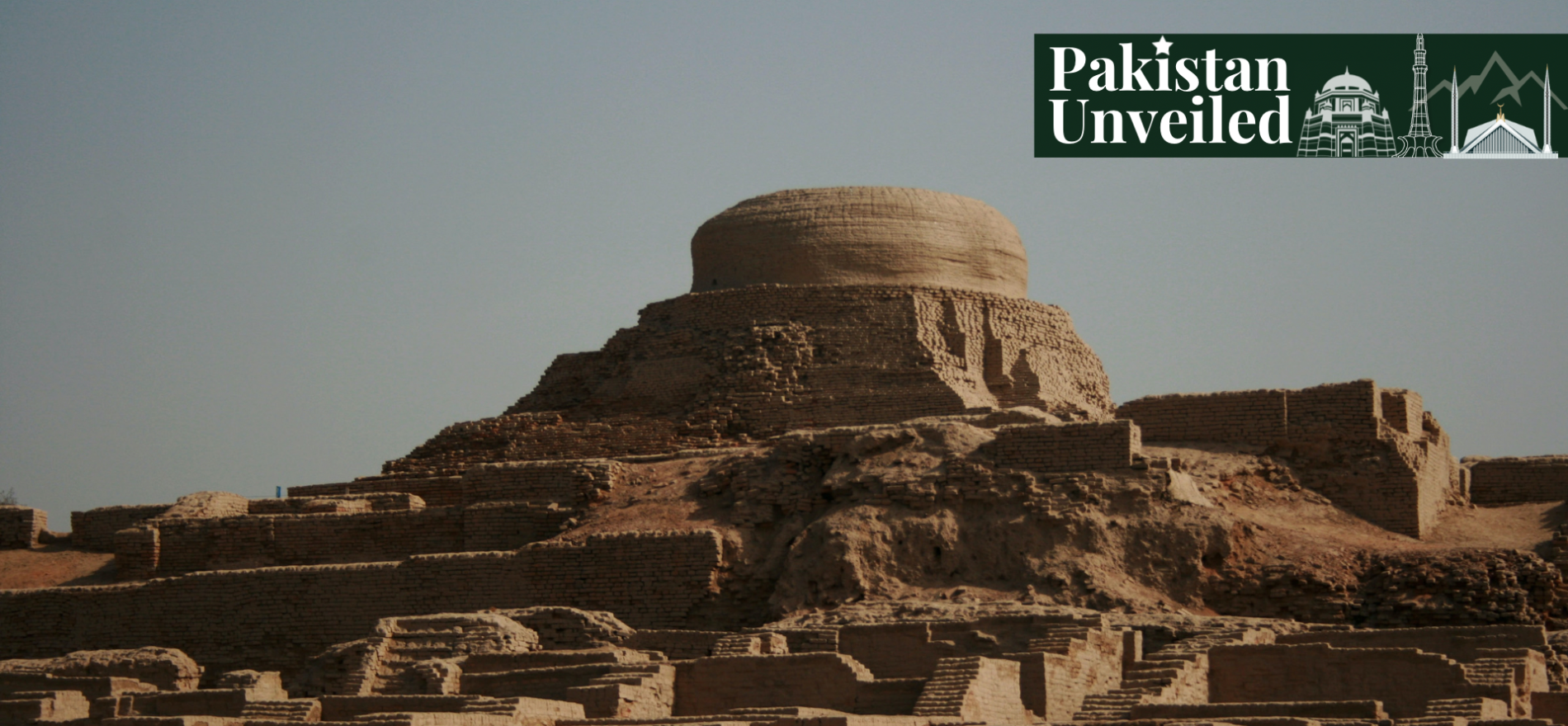The Ancient Ruins of Mohenjo Daro
Mohenjo Daro, meaning “Mound of the Dead Men,” was a city constructed in 2500 BCE, spanning an area of 750 acres. The ancient ruins of Mohenjo Daro once formed a part of the Indus Valley civilization and housed a population of 40,000 people. The architecture of houses in Mohenjo Daro was quite advanced as some houses in Mohenjo Daro were constructed by rectangular blocks of dimensions 1,200 by 800 feet.

There were also holes in the walls of these houses to remove dirty water; the underground drainage system within the city would take the filth away from it. The city was divided into two parts, a citadel area, and a lower city. The citadel was constructed in the western part of the city while the lower city spanned the banks of the Indus river.
The citadel sector of Mohenjo Daro is also notable for the Great Bath, the earliest public pool of the pre-modern era, and the Buddhist Stupa constructed in the second century AD. While the dome of the stupa has long disappeared, the circular base remains. Upon excavation, the stupa covering an area of 555 acres has revealed several relics of the Indus Valley civilization.

Iamaanullah is licensed under CC BY-SA 4.0.
One of the few reasons which led to Mohenjo Daro gaining popularity was its cosmopolitan urban planning and civil engineering. Around 400 wells were found in the city upon excavation. Archeologists also found copper and stone tools, pottery, weights, seals, and statues; the seals and pottery found in the city were inscribed with the Indus Script, a writing system that remains mostly undeciphered.
Among Mohenjo Daro’s artifacts were ivory, lapis lazuli, carnelian, and gold, which signified the city’s vast wealth. From the relics, historians have deduced that the lost city had a tightly controlled, yet strong, trade system. Nonetheless, the city began to decline in 1900 BCE. To date, the cause of Mohenjo Daro’s downfall cannot be pinpointed.

What Caused the City to Fall?
After the ruins of Mohenjo Daro were excavated in the 1920s, its decline was believed to be caused by the invasion of the Aryans. However, this theory has long been discredited. The Indo-Aryan migration theory or the “Out of India” theory, claims that the Aryans were people coming from the north to force Dravidians out to the southernmost part of India. This group of people, who labeled themselves as Aryans, we’re located in Central Asia. The Aryans had migrated in small numbers and gradually mingled with local inhabitants which made them strong enough to dominate the natives and take over cities.
Archeologists assume that the rate of Mohenjo Daro’s downfall was increased due to climatic changes. As the river dried up, it led to crop failures and starvation began to increase along with the diseases spreading through the city. A massive brick was being constructed to prevent flooding, but diseases such as cholera made their way into the city. Gradually as time passed, rivers changed their respective directions to the east. As the flood came, the massive brick failed to stop the flood.
However, among the archeologists, geologists, and researchers, there are individuals who believe that Mohenjo Daro, and the Indus Valley civilization, was subjected to atomic war. This is because some of the bodies discovered by archaeologists show extremely high levels of radioactivity. In certain areas, the city was either crystallized or melted. Proponents of the ancient atomic war hypothesis, tend to use this to support their belief. Nevertheless, most archeologists and researchers support the climate impact argument.
Tourism and the Mohenjo Daro Ruins
Mohenjo Daro which was abandoned due to several disasters in 1700 BCE, was rediscovered in 1820. After that, it has played an incredible role in terms of history and tourism. This is because Mohenjo Daro showcases the rich history which hasn’t been ventured upon by historians and archaeologists.
The Great Bath of Mohenjo Daro, in particular, attracts tourists and historians since it is believed to have been constructed 4500 years ago. The bath tank is 2.4 meters deep, 12 meters long and 7 meters wide. It is lined with fine bricks fitted with gypsum plaster to make the bath watertight. Being one of South Asia’s earliest sites to be listed as a UNESCO World Heritage Site, it is of the utmost importance to Pakistan’s culture and history.

Mohenjo Daro is located in Larkana of the Sindh province. It takes about an hour, to view Mohenjo Daro in the air from Karachi. While the transportation by other means is cheap but it is rather time-consuming; the train from Karachi reaches there after 9 hours and the price of a train ticket is about 400-1,000 PKR. However, the local tourist has the luxury of visiting Mohenjo Daro in rickshaws and taxis. The cost of transportation will be 500-1,000 PKR with a taxi, while the most cost-effective transportation method, a rickshaw, only costs 200 PKR.
Tourism at Mohenjo Daro is quite uncertain, even though it has a lot to promise. Due to Pakistan’s security issues, few foreign tourists visit the ruins of the lost city. The tourist site of Mohenjo Daro used to be handled by Pakistan’s government but it has been handed over to the provincial authorities in Sindh. The authorities have set up a technical committee to look after the site and continue to make it better and accessible for tourism.
If you want to submit your articles and/or research papers, please check the Submissions page.
The views and opinions expressed in this article/paper are the author’s own and do not necessarily reflect the editorial position of Paradigm Shift.



















